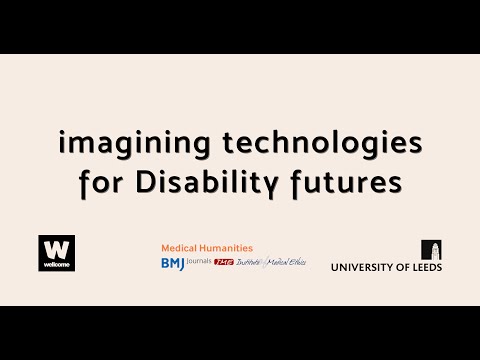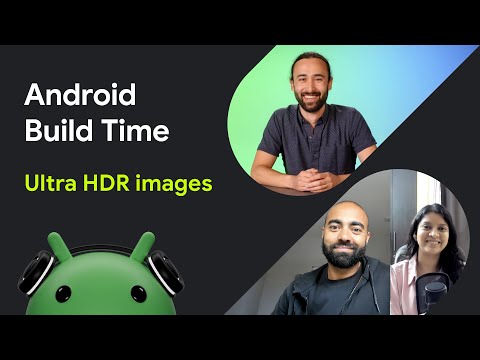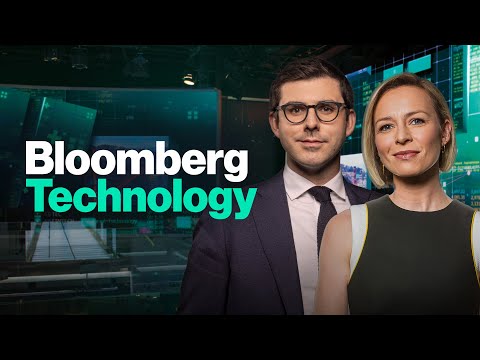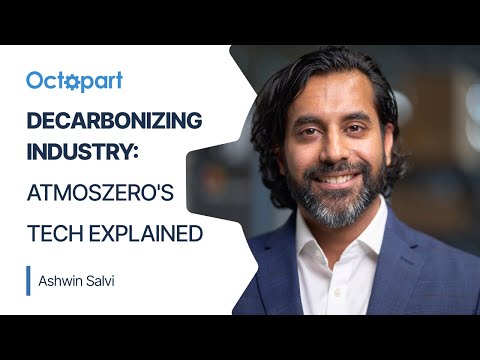imagining technologies for Disability futures

SOFT FUTURISTIC MUSIC PLAYS VOICES INAUDIBLE My name's Stuart Murray, and I'm the lead investigator on the Imagining Technologies for Disability Futures research project. The significance I think of the ITDF project is the way in which it brings together researchers who normally would not have been collected as a group. So it's very unusual, for example, for someone like myself who works in an English department to work with engineers and roboticists, and there's also, I think, been a marked absence of research in art and design that's come together with, for example, philosophy and cultural studies. So part of the idea behind the project was definitely to find new connections that could do justice, I think, to the topics we wanted to talk about, the complexity of disability experience in a variety of forms.
I think one of the major driving forces was the recognition that there is so much discussion of disability in technology. There is so much thought around the way in which bodies in particular and technologies interact, and we wanted the project to question some of those assumptions to come up with new possibilities. I think there's a strong sense that technology might be the solution to a large set of disability experiences, and a lot of that connects to ideas of disabled people's worth, I think, and the extent to which technology would better what it is that they're perceived not to be able to do. I'm Rosemarie Garland-Thomson, and I'm a Professor Emerita of English and Bioethics at Emory University, which is in Atlanta, Georgia, in the USA. The way western medicine operates, of course, is that it focuses on a model of pathology in which anomaly is most often understood as pathology.
So what that means then is that the definitions or the cultural understandings of human variation are framed often in medicine and science, in terms of disease and pathology. And so one of the most important ethical challenges for all of us in bioethics, in education, in all of our institutions is to sort out what these human variations are, and to try to demedicalise them in some way and to try to imagine them as human variations that we might want to be able to live with rather than to eliminate. So that's why it's very important for a field like bioethics to turn to disability as a protected identity category, to understanding people's disabilities as, say, a vulnerable population that needs to be protected in some way rather than necessarily to be a population that needs to be cured. UPLIFTING AMBIENT MUSIC The Medical Humanities journal at BMJ is a quite different journal from other journals at BMJ, partly because we are focused on humanities and also because we're very interdisciplinary. We are looking at the way in which health intersects with the human from all different angles. That's history, anthropology, ethnography, sociology, literature, and the medical sciences, and a lot of times it's looking back at medicine, critically, to assess issues of social justice and accessibility that are problematic in medicine.
And we do that through the humanities, which is quite different and is very exciting. At Medical Humanities, we began a programme called Path to Publication, and this is because in so many ways, publication, especially from the academic side of things, is really inaccessible and it makes it very difficult for anyone who's marginalised or who struggles to have the proper support to get into print, which means academic conversations are always one sided and they drift towards white western well supported ideas, and we miss things from the global south, from LGBTQ, from disabled people, from those who are maybe outside of academe, but still doing research. So in order to try and solve that problem, in the absence of institutional support, we developed Path to Publication as editorial support. So what we chose to do is assess and help groups of people in topics collections to come together at many conferences, sometimes digitally, sometimes in person, where I, as the editor, take part and help to shape those conversations prior to submission, which means they're submitting their work as a level playing field with others who have greater institutional support. And we're really excited to choose ITDF as our sort of first instance of this, because I think that it represents so much of what we're trying to say and do.
Those who are doing disability studies, those who are disabled and who are working at the forefront of technology and research to promote access for disability, are frequently also unable to get into print because of all the extra work that goes into making these things possible. AMBIENT SOUNDSCAPE MUSIC So historically we can start quite lo-fi. We can look at things like the tactile scripts. There's a whole kind of history of tactile scripts that precede braille. And so braille was finally decided upon as a kind of more universal written, tactile language, but there were these kind of preceding models.
And so that's a kind of early technology. It changes the brain and it changes the brain pretty much irrevocably. Braille is basically from night writing script for Artillerymen in France to communicate at night in so, kind of a low vision context for everybody. So it's a disability technology.
I mean, we can call it a technology because it's a social thing and it does involve some change to the brain, but at the same time, everyone could learn to use it technically. But when you do learn to use braille, it does change your brain. So I think that's one really early technology, I suppose. RUSS: Society towards disability varies enormously.
I had a situation in a station once, in Liverpool Street Station and I had my cane, and I bumped into this lady and she said, "Why didn't you look where you're going?" I said, "Can't you see I've got a cane?" "Well, you should be locked up!" I thought, yeah, well, that's all very well saying that. If I can't see, why didn't you move out the way? And then, you have these people using mobile phones and of course I have to tap my cane. So it means hard work for me, extra work, to try and become more independent.
Some areas I think have more facilities, more services, especially where deafblind people are concerned because you have this unusual, I suppose, attitude that deafblindness... people can't hear or do anything, but that's not true. There are different degrees of deafblindness and similarly different levels of hearing losses. JAMIE SPEAKS USING COMMUNICATOR: I've had severely unclear speech all my life, but I've only had a communication device for 12 years.
To say that it has radically changed my life is an understatement. I will ask Emma to help me to elaborate on this and answer any other questions. JAMIE SPEAKS TO EMMA Oh, so information, having the information to, to know what's available and what's out there. That's the first thing.
Second... JAMIE SPEAKS TO EMMA Where to go and how to, yeah, how to, how to access these things. And also whether you fit the criteria. If you were going to get a device like this on the Health Service, you know, not everyone fits the criteria. ACOUSTIC GUITAR MUSIC (BY RUSS PALMER) For me, technology has had a very big impact on my life.
Bear in mind, I was, started off in computers. But I had to take early retirement. And then went into immunotherapy later. But as my vision started to get worse, and then I went blind, I realised that I had to find a way of being able to send emails, communicating to people, etc. So that's when I was introduced to iPads and iPhones, VoiceOver, and that was a very big learning experience for me, especially when you are using touch screens, because you can't see the screen, so everything you touch, you have to be getting a response from your touch.
So, I suppose my computer background was useful, but there's a slight resistance because I didn't really like the technology at all. But now I can't be without it. And that's when I started to become much more involved with some of this technology and I just use it as a tool. So Russ, my hand is behind your back and I'm doing social haptics. So what does it mean? What does it mean doing...? Well, it gives me, information about body language, your body language, other people's body language in the room because I can't see anything.
And it gives me indication if I'm either talking too long or taking time or whatever, you know, I probably don't keep to the time. So you, you give me a lot of awareness of what's going on and the beauty of it is it's a very discreet way of communicating, but it gives you the real time live situation as it occurs. — Yeah. JAMIE SPEAKS TO EMMA He says, he says, I do a lot of things now that you wouldn't be able to do without the technology. JAMIE SPEAKS TO EMMA He says, "I volunteer at Barnsley Hospital Assistive Technology Department, "as a service user representative." JAMIE SPEAKS TO EMMA He says, "what I do. I do interviews,"
"home visits, schools," "mentoring and research, all sorts of things." "Like this, like this symposium that we're at right now." And then, and of course the, the project that we're participating in that's led us to here, It's been quite exciting. JAMIE SPEAKS TO EMMA You couldn't have done that without this. No. And to be able to go places independently. It's okay if I'm with you to talk, but I'm not always there.
GENTLE SYNTH MUSIC FEMKE: What I found extremely important in my personal life is, really get to know the richness of our sensory processing system. And I am always astonished on how little most people know about that. Now I understand because of my deafblindness, I was forced to dive into that. But I honestly believe it, it has a rich potential for all of us, and not only as human beings, but also for technology and, assistive technology specifically. So I made it into my passion to really bring that in and make researchers aware that it's not something they have to focus upon on the end of any thing they design or invent, but they have to focus on that from the very early start because that will shape the whole design.
I share some of my lived experience that's, because of the loss of sight and hearing, I became more aware of the richness of the other senses. But then I also really urge and invite those who are connected to the fields of assistive technology while to acknowledge their own deafblindness in a way, and explore the richness of the sensory potential we all have. I am a designer. I am mainly a conceptual designer, so that means that I'm good at thinking and talking, but in order to channel the, the thinking, in to form or into shape, or to communicate it, I need to write, and I need to communicate it outwards. And for that I use assistive technology, mainly the VoiceOver.
I am doing a bigger programme, which is design education for non-visual people. And the main purpose of that is to raise the accessibility and quality of products, but also of spaces and surfaces. And I think one of the, well, say, limitations or perhaps even dangers is that the design field is very much visually dominated, and that means that it looks good, but sometimes it doesn't work that well. So that's a danger that I see happening in society in general.
In this century, there... and perhaps also for the last 10 years, there's been a rise in attention to inclusivity and diversity. That's a good thing. A danger now is that there's a lot of talking, there's... but there's little doing. They don't know how, they don't have the money for it, and so they don't make it their priority.
SOFT RHYTHMIC MUSIC There are a variety of approaches to academic research into disability. And I think sometimes a major question can be about the extent to which they don't talk to each other. So a major way in which research and disability takes place is through sociology and social policy, because, I think, of the huge importance of talking about disability in society and how governments treat it, for example.
But there's also the great research that goes on in robotics and engineering, in manufacturing and product design, which is not always in conversation with, for example, what I think is really important, the kind of the, the soft power of disability representation. And all of these things can go on separately, without consulting each other, but also without consulting disabled people. And I think that's something we felt we could try and address in the project as a whole.
The Symposium first and foremostly is a significant part in the project because it brings together a lot of people who've been either working on the project or associated with it. And I also think that it's important because it brings together what we've learned, what we've learned through working over four years now. Finding things out, finding what doesn't work, finding what does. A lot of that is in the room as we've been talking over the last two days. I think for me, one of the real highlights is the extent to which we've been able to allow the voices of disabled practitioners, creative artists, technology users, to be heard, and to see them as researchers, not distinct from the academics who might be at this gathering, but integral to the way in which research is practiced.
There's a word we sometimes use across the project, which is 'mentors'. And mentors I think gives us a sense of this real reciprocity that we've learned through the project is absolutely integral to the way that we would want to put research next to experience, and to kind of gather together all of the different viewpoints that have come to make up what we do. I'm Tony Prescott, I'm a Professor of Cognitive Robotics at the University of Sheffield. I'm a co-founder of two robotics companies, and one of the partners in ITDF.
The research that we are doing is looking at how humans and robots interact and how we can make... design robots so that they're better able to help people. And part of that is making the robots more intelligent so that they can, recognise and understand people's needs. Part of them is, is making them safer. to be around people, and also more intuitive for people to use. So we actually in my group explore animal-like, and human-like robots.
So we're also thinking about sort of ethical issues about creating robots that are similar to biological and creatures. So working with the Children's Hospital in Sheffield, and my student Chrissie is helping a group of children with a long-term condition called brittle bone disease. And we're running workshops with those children to show them what robots are like now, but also to help them imagine how robots might be part of their lives in the future, and particularly for children with long...
long-term health conditions, how would that impact and improve their lives? What kind of robots would they want? And so it, it's very broad. You know, we're imagining, you know, robots that can do things that current robots can't do at all. But just looking at these children to see what they think and what in their imagination could be an exciting thing for robots to do that would make their lives better. RIITTA: I was thinking Russ that, and Ray, you actually involved and you take people to be part of the project and research group. - Yeah. I think that is now changing. - Yes. Yeah, well, I think, I mean there, there's always a danger, I think, of it being very tokenistic because there is a fashion for public patient involvement, user centered design, and even in, in research, there are competing pressures that can make it, can make it difficult, sometimes coming out of ignorance, because I think once you mention the term deafblindness, the immediate assumption, as you said Russ is, you know, can't see, can't hear. - Yeah.
Completely vulnerable... - Mm. ...person and, you know, you, the researcher are, are going to do things to this person rather than, rather than working with them as a, as a cooperation. I'm Graham Pullin, I'm Professor of Design and Disability at DJCAD, the art college at the University of Dundee in Scotland.
So in Dundee we've chosen to focus on augmented communication, augmentative and alternative communication, or AAC as it's more long windedly put. And that includes the use of speech technology by people who don't speak, but it's not restricted to technological communication and we've chosen to work with as much as co-researchers as we possibly can. A small but nonetheless diverse group of people who use augmented communication, spending time with those people and in each other's company, we've had some long discussions on the project, has very much, has naturally led us to a very broad perception of what it is we're, we're designing together, that it's not about a technical solution to communication. It's about how can we change the expectations of all the participants in a conversation so that there's some kind of middle ground where everyone feels comfortable with each other's different ways of communicating, and, and that becomes equitable and all voices are equally valued and heard. PIANO & SYNTH MUSIC What ITDF has allowed to happen is not only for these different research projects and these experiences to be shared in print, but it's making visible and, and audible the nature of how we come together to change the world.
Because this is something the public needs to know about. This is something the public wants to hear about. We want to reach other communities for whom this information might be life changing.
And the way to do that is through systems like this where we are making collaborations between researchers and publishing, and we're making as much of it open access as we can, and we're bringing it to the public through things like the MH Podcast and the MH Blog, neither of which are behind a paywall, because we want the public to see, and hear, and know, that they're not alone in struggling with these issues. I'm very enthusiastic about all the developments that take place right now in technology, assistive technology, and also how it's intertwined with AI. I think technology has the potential to play a major role in that. But then we need to connect to this development all together. And not only within projects like this, but also beyond research, really on a societal level.
And, I think we should be very critical about the whole development, but not fearful. And fear is really, you know, keeping it small and in the end will not develop the possibilities it has, the potential it has in ways that will be helpful to us. So fear in the end will not help us. Being critical. Absolutely necessary. Yeah.
And that also means that we do not leave it up to the companies to decide what is important and what is not, but that we take our own place in the whole process that's going on right now and how it is integrated in our lives. What we want to do is to be intentional in the design, building, making, and distribution of these technologies in the very, very broadest sense. And to think about how we can do it in a way that will be most beneficial for the most people.
And that will be most just, in terms of not just that distribution, but how we use the resources that we have to make these technologies that we need in order to live and make community together. SOFT PIANO & STRINGS MUSIC MARK: One of the consistent things that I've looked at in the history of the development of technologies from the 1950s onwards, is being continued through companies like Neuralink, so Elon Musk's company. So trying to commercialise brain-computer interfaces. So one of the hopes that I have is actually that more and more technologies can be done, and created or co-created, not just through university researchers, but also with user bases, you know, the, the, the world, the wider world out there, everything, rather than commercialisation through laboratories, connected to the higher education industrial complex. So there's that. I think one of my personal hopes is that more low tech solutions are disseminated throughout the world, but also that when high tech solutions are sold and made available, that it's not just for profit.
RUSS: For me, I think cooperation is the biggest asset. And also working with Ray has been an absolute privilege, to share my knowledge and to work with Ray and Riitta, to incorporate social haptics, communication on the humanistic level, into developing technologies. So I think the future in the long term will be trying to keep that humanistic level there, but not letting technology overtake the way humans react and respond in everyday life. And at the same time, it's improving my quality of life and other people's quality of life, and that's important. JAMIE SPEAKS TO EMMA EMMA: I hope... to, to carry on like you are helping to, to shape the future.
That's what we were saying earlier. Help shape the future by coming to events like this and collaborating with researchers. JAMIE SPEAKS TO EMMA EMMA: It's the only way, the collaboration and co-creation. Yeah. Getting the, getting the users in and working out where we're going with stuff. UPLIFTING BEAT TO MUSIC I suppose my greatest hope is that by raising the profile of these considerations, by making them louder, by sharing them more broadly, we'll create a kind of groundswell, where it comes out of a sort of philosophical, you know, discussion and becomes real, and becomes plugged into the way people live their actual lives. So to me, I want to bring these considerations from the quiet spaces of academe, out into the big, loud world, and I want people to see and know what they're capable of, and what is really possible because that's, that's the nexus, isn't it? We have capabilities and there are possibilities, and we need to make sure that those things connect.
And one way to do that is by communicating this as broadly as possible. MUSIC BEGINS TO CRESCENDO I think there's a very real way in which if you want to be positive about the future, you can take what I think is a general social acceptance of disability that certainly wasn't the case decades ago, but that needs to be enriched. That needs to be something that isn't just seen as a sports star or an actor in a performance. I think it needs to be seen in the world of the everyday and the mundane, and those are both words that we've come back to a lot in ITDF. The ordinary. Because I think ordinary disabled lives will continue to be the lives of the future and for them to flourish, for them to be allowed to have the capacity to express themselves in the multiple ways in which they live, that would be a great outcome.
MUSIC FINISHES SOFTLY
2024-09-14 17:28


